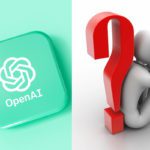OpenAI has mounted a robust defence against The New York Times lawsuit while simultaneously announcing expanded initiatives to support journalism, highlighting the complex relationship between AI technology and news media organizations.
The artificial intelligence company is facing allegations from The New York Times that it unlawfully used millions of articles to train its ChatGPT model. OpenAI strongly disputes these claims, asserting that its use of copyrighted material falls within fair use provisions under American copyright law.
In a detailed response, OpenAI emphasized that ChatGPT is not designed to replace news subscriptions and challenged the transparency of the methods used by The Times to demonstrate content reproduction. The company identified a rare “regurgitation” bug that could cause AI models to reproduce training data, stating that this issue is being actively addressed.
The controversy has not deterred OpenAI from strengthening its commitment to journalism. The company has launched several collaborative initiatives with news organizations, providing AI tools to assist with tasks such as analyzing public records and translation services. These partnerships aim to create synergistic relationships between AI technology and traditional journalism.
A significant development in OpenAI’s support for journalism is the implementation of an opt-out option for news organizations, allowing them to control whether their content is used in AI training. This move demonstrates OpenAI’s commitment to addressing concerns about content usage while maintaining technological advancement.
The company’s support extends particularly to local journalism through the Lenfest Institute AI Collaborative and Fellowship program. This initiative provides grant funding and enterprise credits to prominent news organizations including Chicago Public Media, Newsday, and The Seattle Times, enabling them to explore AI applications in newsrooms.
Harvard Law experts have identified this legal battle as a crucial test case for AI copyright law. OpenAI’s defense, which includes claims that the Times employed unusual methods to generate problematic outputs, presents significant implications for future AI development and content usage rights.
Looking ahead, this confrontation between OpenAI and The New York Times could reshape the landscape of AI development and journalism. The outcome may establish important precedents for how AI companies can use copyrighted material while respecting publishers’ rights and supporting the sustainability of quality journalism.
The situation highlights the delicate balance between technological innovation and protecting intellectual property rights in the digital age. As AI continues to evolve, the resolution of this dispute could significantly influence future collaborations between AI developers and news organizations.
News Source: https://openai.com/index/openai-and-journalism/









